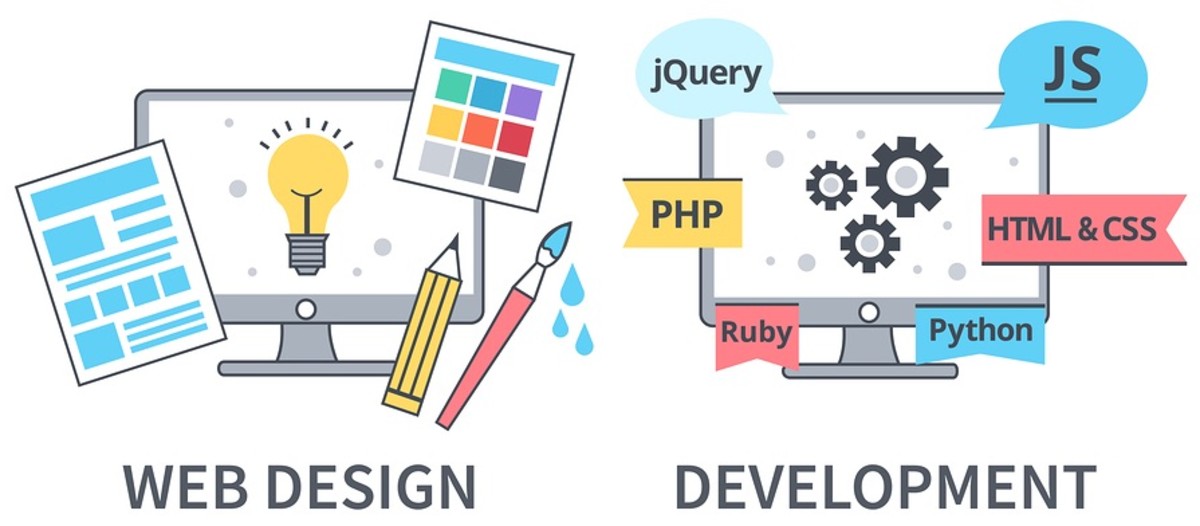Web design and web development are two of the most important parts of building a website. Web design is the process of arranging elements on a website in an appealing and functional way. It’s more than just the background and the text. It also includes the colors, the layout, the images, and the videos. Everything on the website contributes to the design, including the text, the images, and the background. Web design is the part of website creation that encompasses the visual elements of a website. It involves creating a layout and design for a website that will be appealing to visitors and will help convey the message the website owner wants to convey. Good design is the foundation of a successful website. It’s the first thing people notice about a website. It has a significant impact on how visitors feel about a brand and whether they take action. A well-designed website uses visual elements to communicate a message and create an emotional connection with visitors.
7 Components of Visually Appealing Web Design
It takes many different elements to produce a visually beautiful web design. The importance of website aesthetics in attracting consumers online may not come as a surprise. The speed with which these users make their judgments about a website is startling. In reality, consumers create opinions about your website in less than a nanosecond.
1. Color
Color is one of the most important design elements because it conveys a specific message and sets the tone for your entire website. Color can instantly convey emotion and make a visitor feel a certain way, which is why it’s such an important design element. It can also create a feeling of warmth or coldness, feelings about your brand and whether they take action.
2. Images
Images are used to add depth and dimension to a website, which helps create a more compelling design. The right images can help draw visitors in, which can increase the chances that they will take action. The right image choice can also help visitors relate to your brand and will communicate a message much better than text alone.
3. Clarity
Clarity is the foundation of a successful website. Without clarity a visitor cannot tell what they are looking at, nor can they tell how to navigate the site. By using clear, concise language and simply telling your story, you’re telling your visitors what you’re about and why they should care.
4. Navigation
The basic navigation elements in web design are the headings, links, and the list. They provide the main structure to your website and help visitors navigate content on the page. A heading is a short text used to give a clear title to a section of the page. Links are references to content that is elsewhere on the web and are often used to connect to other sections of the site.
5. Usability
Web usability is a field of study that focuses on the effectiveness of the user interface of a website, the accessibility of the website, and how the website can be improved with design. A poor website is unusable for its intended purpose. Using functional design principles is a great way to increase the chances that visitors will find your website useful. It can also help to improve your website’s conversion rate, which is the percentage of people who complete the desired action on a website after viewing just a single page.
6. Visual Hierarchy
The grouping of items according to importance is known as a visual hierarchy. One of the most essential functions of the visual hierarchy is the establishment of a focal point, which points viewers to the placement of the most essential information.
7. Typography
Typography is essential to website design. On the internet, written language constitutes more than 95% of the information. Reading becomes effortless when the typography is good, whereas users become disinterested when it is bad. Your user interface is also optimized when your typography is optimized. It will provide you with a series of guidelines in this article to help you make your text content easier to read and legible.
Just the Beginning
The seven guiding principles we’ve covered here are just the beginning of good web design. Accessibility and readability are also important factors. This explains why web design is so challenging. With so many content management systems, blogging tools, and themes readily available nowadays, getting your feet wet in design is simple. But it takes time and, let’s face it, talent to properly master all aspects of web design. This article is accurate and true to the best of the author’s knowledge. Content is for informational or entertainment purposes only and does not substitute for personal counsel or professional advice in business, financial, legal, or technical matters. © 2022 Javeria Nazar
